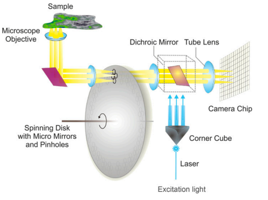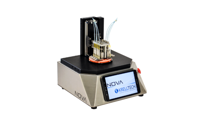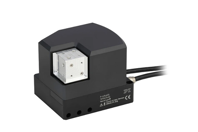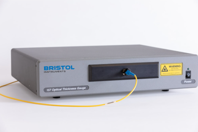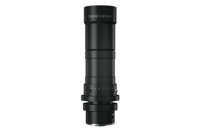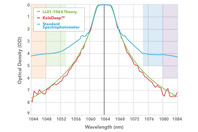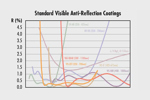OPTICAL COMPONENTS, COATINGS, & MATERIALS INSIGHTS
 The Expanding Role Of Micro Molding In Photonics
The Expanding Role Of Micro Molding In Photonics
Micro molding drives photonics innovation, enabling the scalable production of small, complex, and optically precise parts, helping OEMs meet shrinking device footprints and demanding performance requirements.
-
The Benefits Of Customised Optical Filters For Machine Vision
Customized optical interference filters optimize machine vision performance by tailoring light control for specific tasks—enhancing precision, speed, and reliability in industrial inspection, automation, and quality assurance applications.
-
Why LSR Is A Leading Material For Optical Micro Molding
Liquid Silicone Rubber (LSR) is redefining optical micro molding with superior durability, design flexibility, and thermal stability—empowering next-generation optical components where traditional thermoplastics fall short.
-
Custom Optical Filter Process
Custom optical filters streamline fluorescence-based system design, optimizing spectral performance, manufacturability, and production scalability for prototypes and full-volume applications.
-
Lot-To-Lot Consistency With Semrock Optical Filters
Not all optical filters perform as advertised. See how Semrock filters deliver proven lot-to-lot consistency—matching theoretical performance with real-world results every time.
-
High-Performance Optics Engineered From An Unmatched Range Of Substrates
From sapphire and silicon carbide to ZERODUR® and ALON, advanced material mastery enables the production of precision optics engineered for performance in aerospace, defense, semiconductor, and scientific applications.
-
How A Strategic Partnership Drove Micro Molding Success
In micro-manufacturing, supplier choice significantly determines success. Explore how one company transformed a struggling production program into a 150-million-part success through trust, scalability, and true strategic partnership.
OPTICAL SOLUTIONS
-
The NOVA™ optical polishing system from KrellTech provides industry-leading flexibility and precision for a wide range of photonic components.
-
The P-616.65S NanoCube® is a compact, parallel-kinematic, 6-axis piezo system designed for ultra-precise nanopositioning and demanding applications like fiber alignment in photonics and integrated optics.
-
The Optical Thickness Gauge products use the unique properties of light to measure the thickness of transparent and semi-transparent materials while directing light through an optical probe.
-
The 1000:1 extinction ratio polarizing cube is a very high-performance beamsplitter designed to precisely split up the S & P polarization of light operating in a wide variety of wavelengths.
-
Optical filters enhance system precision by selectively transmitting or blocking wavelengths, supporting machine vision, spectroscopy, fluorescence microscopy, and medical imaging with customizable solutions.
-
Magnification lenses enable detailed microscopic analysis across medicine, science, and technology, supporting innovations like light-sheet microscopy, DIAMOND lenses, and image-guided robotic surgery for precision and research advancement.
-
Discover end-to-end solutions from optical and mechanical design to prototyping, offering customized lenses, system engineering, and advanced industrial optics for faster innovation and market-ready products.
-
SYLVINE bilateral telecentric C-Mount lenses deliver high-resolution imaging for precision measurement, tube and jewel inspection, ensuring accuracy, sensor compatibility, and reliable performance across industrial and scientific applications.
OPTICAL NEWS
-
Photonics West 2026 offers over 100 technical conferences, 60 courses, and networking events spanning biomedical optics, lasers, quantum tech, and Vision Tech.
-
Photonics surged in 2025 through telecom, AI, and health advances. In 2026, AI-driven design, quantum sources, thin films, and sustainability lead the next innovation wave.
-
Analyze projected image distortion in cinemas, detailing keystone, anamorphic, and curved-screen effects, with calculations and tolerance guidelines to ensure visually pleasing image quality.
-
Semrock’s KolaDeep Spectral Measurement System ensures ultra-deep blocking and steep spectral edges for custom optical filters, delivering precise, repeatable performance across UV, visible, and NIR ranges.
-
Automated machine vision paired with photonics revolutionized fiber-optic connectivity in the 1990s, enabling consistent, high-speed internet by ensuring connectors remained clear of microscopic defects.
-
Optical filter costs are reduced by avoiding over-specification of blocking and surface quality. Choose simpler substrates and use APS or magnetron sputtering for dense coatings.
-
Explore the latest breakthroughs in crystalline optical coatings and graphene-based photonic components, highlighting their mechanisms and transformative applications.
-
Optical micro overmolding combines micro molding with lead-frame or insert processes to achieve precision, clarity, and integration, demanding early collaboration to ensure manufacturability, performance, and cost efficiency.
OPTICAL VIDEOS
-
Turnkey Fluorescent Microscope Demonstration
Explore a turnkey fluorescent microscope, demonstrating integrated optical subsystems that deliver diffraction-limited imaging and scalable, reconfigurable solutions for diverse microscopy applications.
-
How To Understand Damage Thresholds
In this video, Félicien Legrand, US/Canada Sales Manager at Gentec-EO, talks about the damage thresholds of your detector. Learn how to understand them and why it is so important.
-
Choosing Your Gentec-EO Display Solution
Charles Dumas, Gentec-EO’s International Sales Director, provides an overview of Gentec-EO’s display options for laser power and energy measurements. Check out his guide!
-
What Are Ghost Images?
Ghost images in optical systems are faint reflections creating secondary images. Kristina Kaszei from Edmund Optics explains this phenomenon, distinct from supernatural images.
-
A Wide Spectrum Of Optical Filters
Optical filters control light wavelengths, enabling various applications. They are used to block, transmit, or modify light, and can be combined to create specialized filters.



